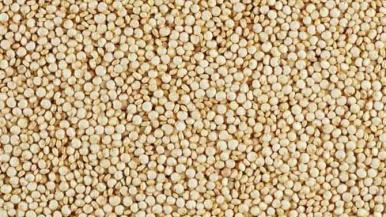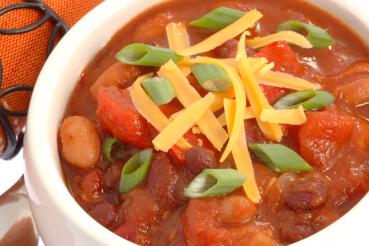The '70s gave us alfalfa sprouts. In the '80s, it was oat bran.
Now there's a whole new set of so-called superfoods — from pomegranate juice to dried plums. But sometimes it's a little tough to separate the dietary fads from the truly nutrient-rich foods.
So we asked Jennifer Ventrelle, MS, RD, a registered dietitian and lifestyle program director for the Rush University Prevention Center, to tell us her favorites.
Quinoa
High atop her grocery list is quinoa, a grain-like seed that has become a popular menu item in recent years.
"It's unique because it's high fiber and it's high protein," says Ventrelle, who suggests substituting it in rice dishes and salads. "If you mix it with the right things, it's really good," she says.
It can be somewhat time-consuming to prepare, as some varieties need to soak in water for a while. Other quinoa products, though, are pre-soaked and simpler to cook, kind of like boiling rice. (Try our cowboy caviar and quinoa recipe to the right)
Acai fruit
The deep purple acai fruit, which comes from a type of palm tree native to Central America and South America, is frequently served as a juice or in smoothies. Like pomegranate juice, it's touted for its high levels of antioxidants, which experts believe may reduce the risks or progression of cancer and other diseases.
Edamame
Ventrelle also is partial to edamame, the protein- and fiber-rich soybeans that have found fame beyond the sushi bar.
Typically boiled or steamed, they can be served in pasta dishes, soups, salads or by themselves on the side.
Whatever wonder foods you choose to chow down on, keep in mind that they're just one component of a healthy diet and lifestyle. "If somebody is eating McDonald's every day, is pomegranate juice going to save them? No," Ventrelle says. "We have to look at the big picture."
Kale
What is it about kale that makes it such a nutritional powerhouse?
For starters, this leafy green is high in vitamins, minerals and brain-boosting phytonutrients. It also promotes heart, bone and skin health, and may help protect against cancer and diabetes.
And you can eat a lot of it without worrying about your waistline: kale is fat free and low in calories (one cup has only 36 calories). Plus, it's packed with fiber (5 grams per cup), so it'll fill you up and help with digestion.
You can enjoy kale raw (like in a salad) or cooked. It also makes a tasty and healthy smoothie ingredient, Check out our kale recipes to the right.




